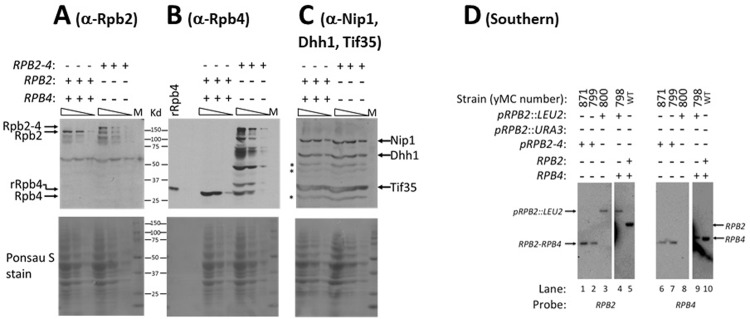Fig 3. RPB2-RPB4 cells do not contain other source of Rpb2 and Rpb4 and express Rpb2-Rbp4 fusion protein as well as Rpb2 and Rpb4 proteins.
(A-C) Cell lysates of the indicated strains were loaded on polyacrylamide gel; each lysate was loaded in 3 lanes, containing either 200 μg, 70 μg or 20 μl of protein/lane. Three replicates, each containing 6 lanes, were thus loaded and analyzed by Western blotting assay; each membrane was reacted with either anti-Rpb2 Abs (A) or anti-Rpb4 Abs (B), or with a combination of anti-Nip1 + anti-Dhh1 + anti-Tif35 (C). Thirty ng of recombinant Rpb4-HISx6 (rRpb4), expressed in E. coli, was loaded in panel A to mark the position of Rpb4 (note that the rRpb4 migrated slower than Rpb4 due to an HISx6 tag that was used for its purification). Ponsau S stain of the membranes is shown underneath each respective panel. The pre-stained size marker (BioRad) is also shown. Asterisk indicates non-specific bands that characterize anti-Dhh1 and anti-Tif35 (results not shown). (D) DNA from the indicated strains was digested with Hind III, which cuts RPB2 once at position 770 downstream to the translation start site (2930 bp upstream of the stop codon), and cuts RPB4 ORF once at position 595 downstream to the translation start site (71 bp upstream of the stop codon). The DNA digest was subjected to Southern analysis, in duplicate, using either RPB2 or RPB4 probes as indicated. Y799 was constructed previously [15]. Y871 is an identical strain recreated in this work using the shuffling approach [15]. The 3535 bp Hind III fragment is indicated by an arrow (designated “RPB2-RPB4”). The position of the RPB2::LEU2 plasmid and the endogenous RPB2 and RPB4 are also indicated. The DNA molecules of these strains were subject to PCR analyses, using various primer pairs. The results (not shown) were consistent with the results of this Southern experiment, indicating that the only source of Rpb2 and Rpb4 is a single RPB2-RPB4 chimeric gene.

